Kapitän zur See Hans Wilhelm Langsdorff |
|
(1894-1939) |
|
Page 1 |
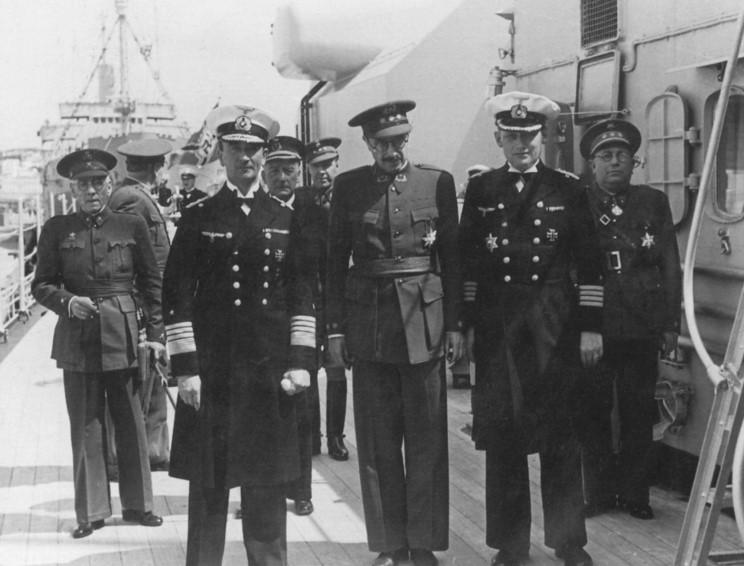 |
May 1939:
Admiral Hermann Boehm (front row left), the High Commissioner of Spain in Morocco General
Juan
|
Hans Wilhelm Langsdorff was born in Bergen on the island of Rügen on March 20, 1894, the eldest son of a family with legal and religious traditions rather than a naval tradition. In 1898 the family moved to Düsseldorf, where they were neighbors of the family of Count (Graf) Maximilian von Spee, who was to become a German naval hero (while losing his entire command) in the Battle of the Falkland Islands in 1914. Influenced by his honored neighbors, Langsdorff entered the Kiel Naval Academy against his parent's wishes in 1912. During the First World War the then Lieutenant Langsdorff received the Iron Cross 2nd Class at the battle of Jutland in 1916, and subsequently worked in minesweepers for the rest of the war. He received the Iron Cross 1st Class sometime during the remainder of the war, but the exact date is unknown. In 1923 while he was posted to the navy office in Dresden he met Ruth Hager, whom he married in March 1924, with their son Johann being born on 14 December. In October 1925 he was posted to the Defense Ministry in Berlin to co-ordinate relations between the navy and the army. In 1927 Langsdorff was posted to the command of a torpedo boat flotilla and in April 1930 he was promoted to Lieutenant Commander. In 1931 he was recalled to Berlin as his administrative abilities were well-known and appreciated. Following the coming to power of the Nazis, Langsdorff requested duty at sea in 1934 but was instead appointed to the Interior Ministry. In 1936 and 1937, while on board the new Admiral Graf Spee while on the staff of Admiral Boehm, Langsdorff participated in the German support of the Nationalist side in the Spanish Civil War. On 1 January 1937 Langsdorff was promoted to Captain, being given command of Admiral Graf Spee in October 1938. On 21 August 1939 Admiral Graf Spee left port with orders to raid enemy commercial shipping in the South Atlantic following the outbreak of the Second World War. For the first three weeks of the war the ship hid in the open ocean east of Brazil while the German government determined how serious Britain was about the war. On 20 September 1939, Admiral Graf Spee was released to carry out its orders. Over the next ten weeks, However Langsdorff's luck ran out on the morning of 13 December 1939 when his lookouts reported sighting a British cruiser and two destroyers. Admiral Graf Spee now suffered engine fatigue that reduced her top speed to 23kn. After Langsdorff had committed his ship to the attack it became apparent that the destroyers were in fact light cruisers (HMS Ajax and HMNZS Achilles) in addition to the heavy cruiser HMS Exeter. Naval analysts claim that Langsdorff then committed a grievous tactical error. His ship outgunned all his opponents (having 11 inch (280 mm) caliber main guns, to Exeter's 8 inch (200 mm) and Ajax and Achilles' 6 inch (150 mm) guns). The Uruguayan authorities followed international treaties and, although granting an extra 72 hours stay over the normal 24 hours, required that Admiral Graf Spee leave port by 20:00 on 17 December 1939 or else be interned for the duration of the war. Langsdorff sought orders from Berlin, and was given instructions that the ship was not to be interned in Uruguay (which was sympathetic to Britain); he could try to take the ship to the friendlier Buenos Aires in Argentina although it was thought that the channel was not sufficiently deep for the ship; he could take the ship out to sea to battle the British forces again (though British propaganda was trying to persuade people that a large British force already lay in wait for him-though in fact it would not be able to arrive for five days); or he could scuttle the ship. Langsdorff was taken to the Naval Hotel in Buenos Aires , where he wrote letters to his family and superiors. He wrote on the 19 December 1939: "I can now only prove by my death that the fighting services of the Third Reich are ready to die for the honour of the flag. I alone bear the responsibility for scuttling the pocket-battleship Admiral Graf Spee. I am happy to pay with my life for any possible reflection on the honour of the flag. I shall face my fate with firm faith in the cause and the future of the nation and of my Fuehrer." He lay on Admiral Graf Spee's battle ensign and shot himself, forestalling any allegations that he had avoided further action through cowardice. Another motivation was Langsdorff's desire to go down with the Graf Spee. He was talked out of such an action by his officers, who convinced him that his leadership was still needed in seeking amnesty for his crew. Once the fate of the Graf Spee's crew was decided, Langsdorff killed himself over her ensign as a symbolic act of going down with his ship. Hans Langsdorff was buried in the German section of the La Chacarita Cemetery in Buenos Aires, Argentina and was honored by both sides in the battle for his honorable conduct. |
(Text courtesy of Wikipedia)
|
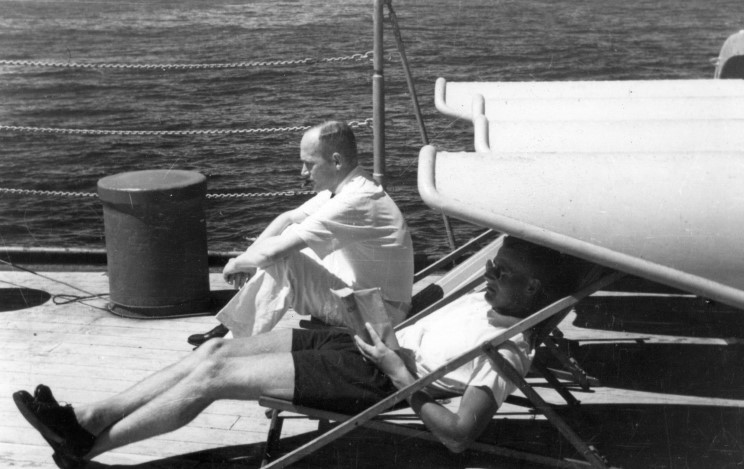 |
1939: Kapitän zur See Hans W. Langsdorff (dressed in white) seen relaxing under one of the torpedo launchers with an unidentified crewman. |
(Photo courtesy of Hugo R. Sochi and Roxana Cavallo.
|
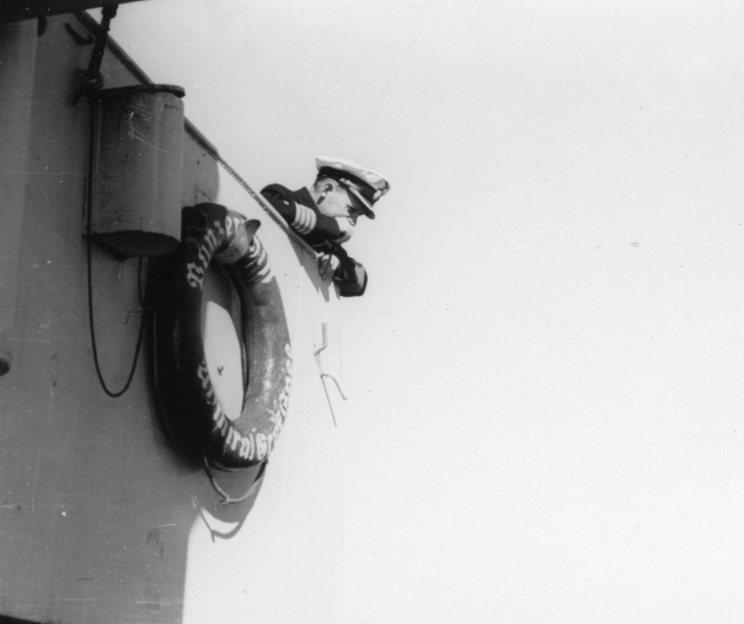 |
1939: Kapitän zur See Hans W. Langsdorff seen on the Admiral Graf Spee.
|
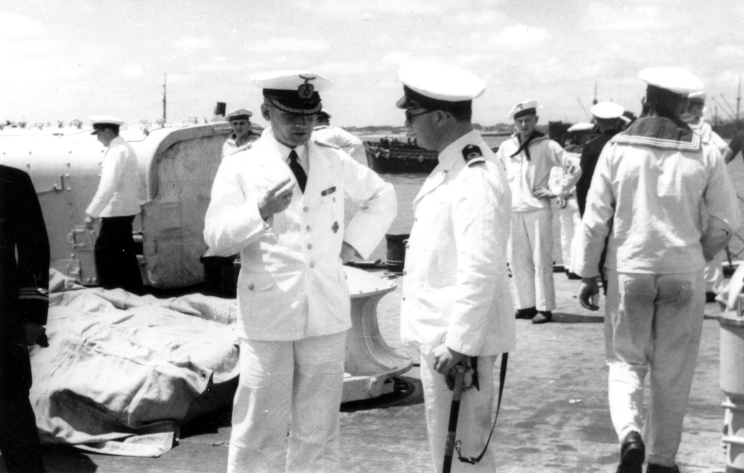 |
December 1939: Kapitän zur See Hans W. Langsdorff seen at the stern of Admiral Graf Spee.
|
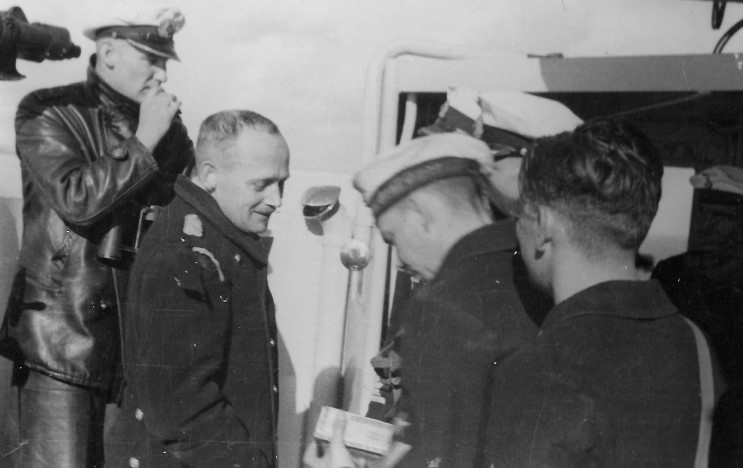 |
1939: Kapitän zur See Hans W. Langsdorff (without hat) and
Oberleutnant zur See
Kurt Diggins (far left) on the Admiral Graf Spee. |
(Photo courtesy of Hugh R. Sochi, from the private collection of Hugo Oehler Jr. son of
|
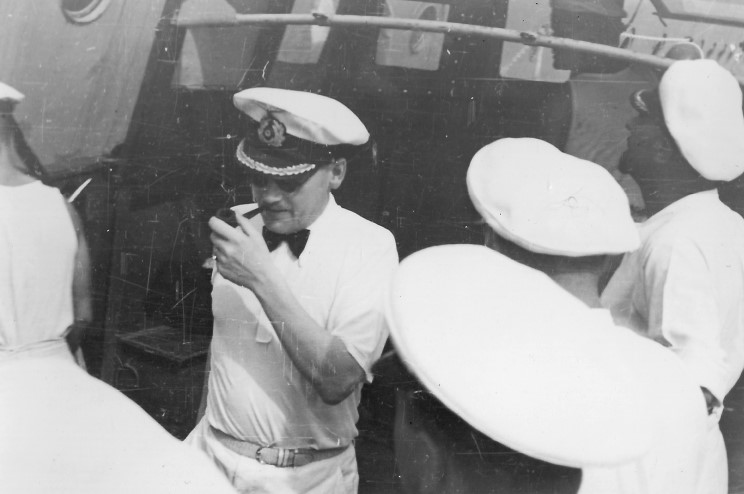 |
1939: Kapitän zur See Hans W. Langsdorff in a motor launch alongside the Admiral Graf Spee. |
(Photo courtesy of Hugh R. Sochi, from the private collection of Hugo Oehler Jr. son of
|
Kapitän zur See Hans W. Langsdorff Photo Gallery |
||
Page 1 |
||
Page published July 8, 2008 |
||